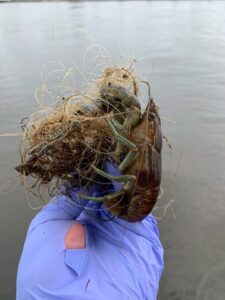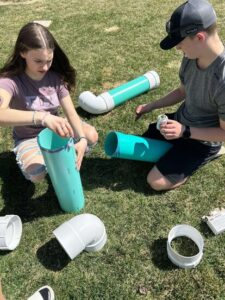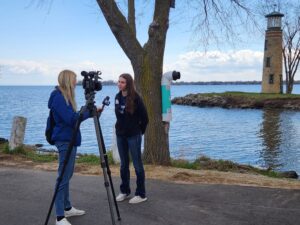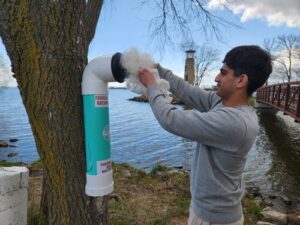Celebrating student scholars
The calendar has flipped to 2024. Our staff members are already tackling new projects. Before they move too deeply into the new year, however, some staff members took a moment to retain the glow of their favorite 2023 project. Jenna Mertz, science writer, shared her thoughts.

Jenna Mertz. Credit: Wisconsin Sea Grant
My favorite project of 2023 was writing profiles of the 12 undergraduate students involved in the Summer Outreach Opportunities Program, which pairs students with Wisconsin Sea Grant outreach specialists to work on coastal and water resources projects across the state.
Being new to Sea Grant, it was a great opportunity for me to learn about our programming and the day-to-day tasks of outreach specialists. I also thoroughly enjoyed working with the students, who were generous with their stories and fun to talk to. Over the course of the summer, I gleaned from them an eclectic mix of fun facts about topics including, but not limited to
- longshore currents,
- macrophotography,
- and street sweepers.
I was also glad to hear that students shared the profile stories about them with their parents and loved ones. What more could a writer ask for?
Read more about the summer outreach scholars and their projects.
The post Celebrating student scholars first appeared on Wisconsin Sea Grant.
Blog | Wisconsin Sea Grant
https://www.seagrant.wisc.edu/blog/celebrating-student-scholars/

 continue this partnership, we jumped at the chance to work with students on a litter prevention effort. The plan was to have Communities students build and install fishing line receptacles at public fishing locations in the greater Oshkosh area.
continue this partnership, we jumped at the chance to work with students on a litter prevention effort. The plan was to have Communities students build and install fishing line receptacles at public fishing locations in the greater Oshkosh area. Kelly Reyer who runs the Trash Free Waters program at Fox-Wolf, met with the students several times throughout the semester, setting a project schedule and helping to coordinate with the Winnebago County Parks Department.
Kelly Reyer who runs the Trash Free Waters program at Fox-Wolf, met with the students several times throughout the semester, setting a project schedule and helping to coordinate with the Winnebago County Parks Department. members, other Communities students, project partners, and local TV media. The students shared their experience working on this project and were interviewed about their experience by both WLUK Fox-11 and WBAY TV-2.
members, other Communities students, project partners, and local TV media. The students shared their experience working on this project and were interviewed about their experience by both WLUK Fox-11 and WBAY TV-2. waters through targeted campaigns, cleanup events, and outreach and education.
waters through targeted campaigns, cleanup events, and outreach and education.